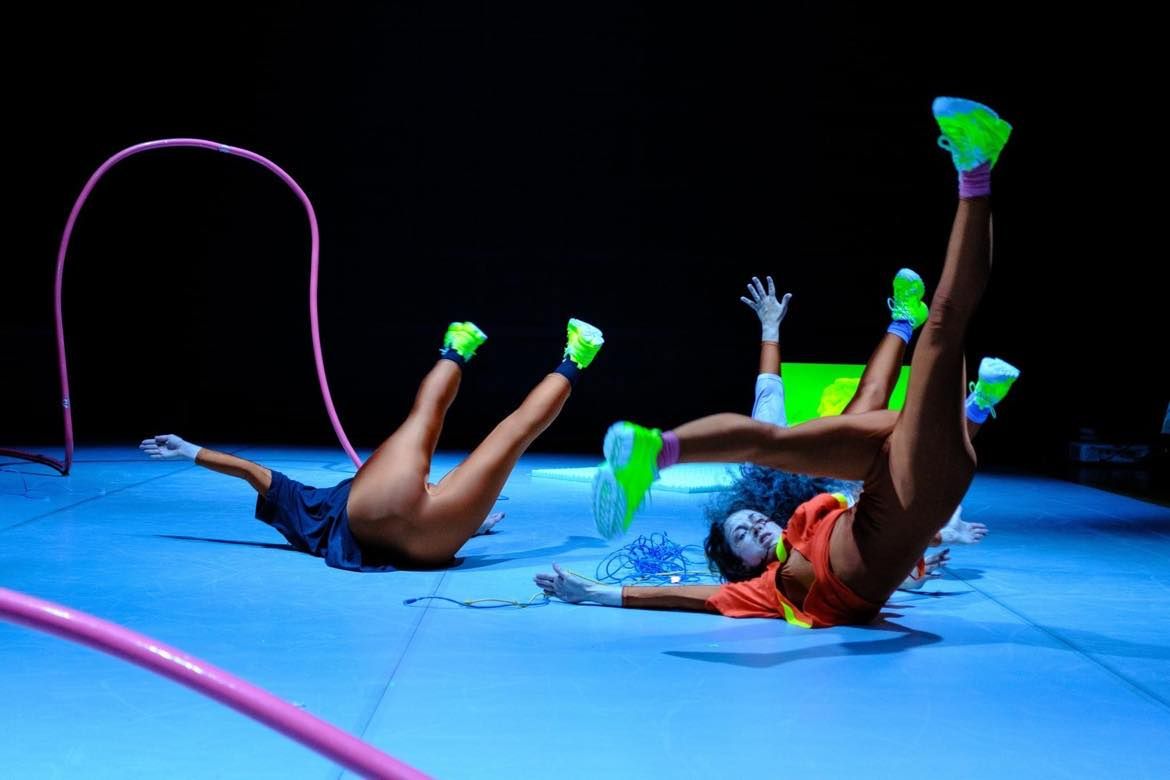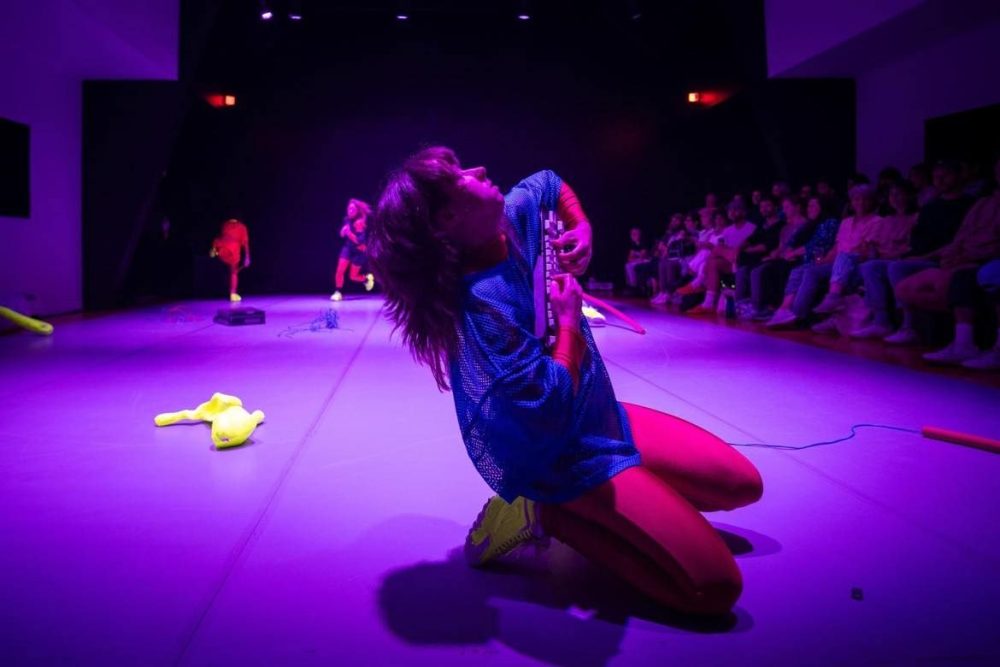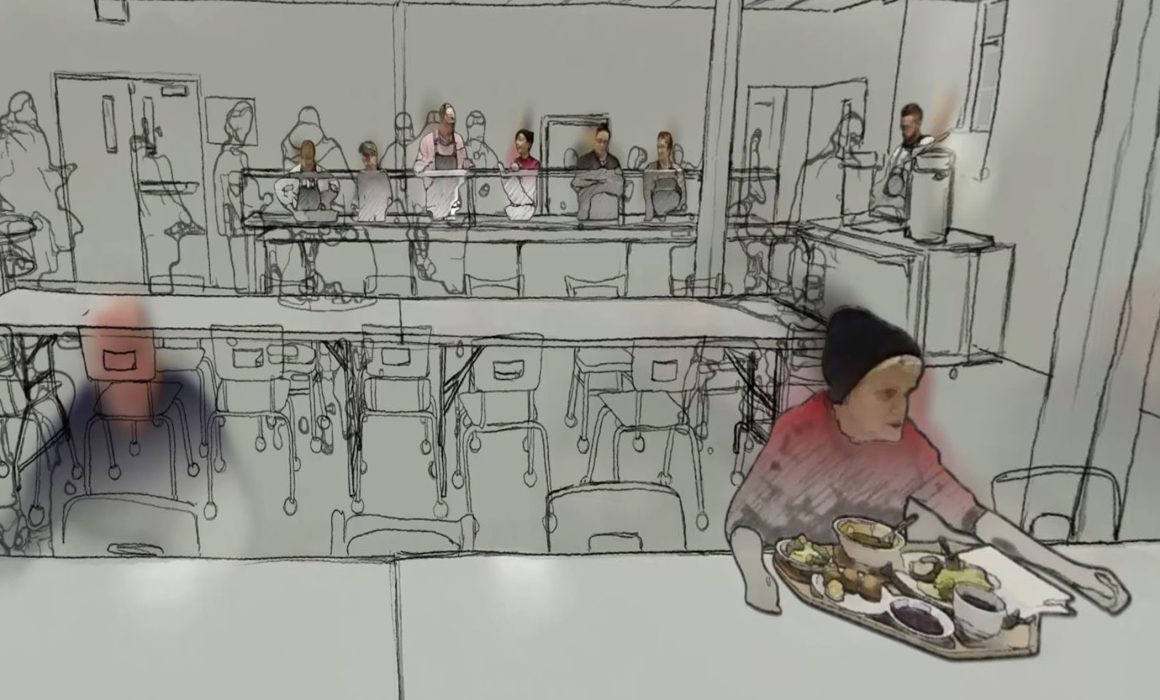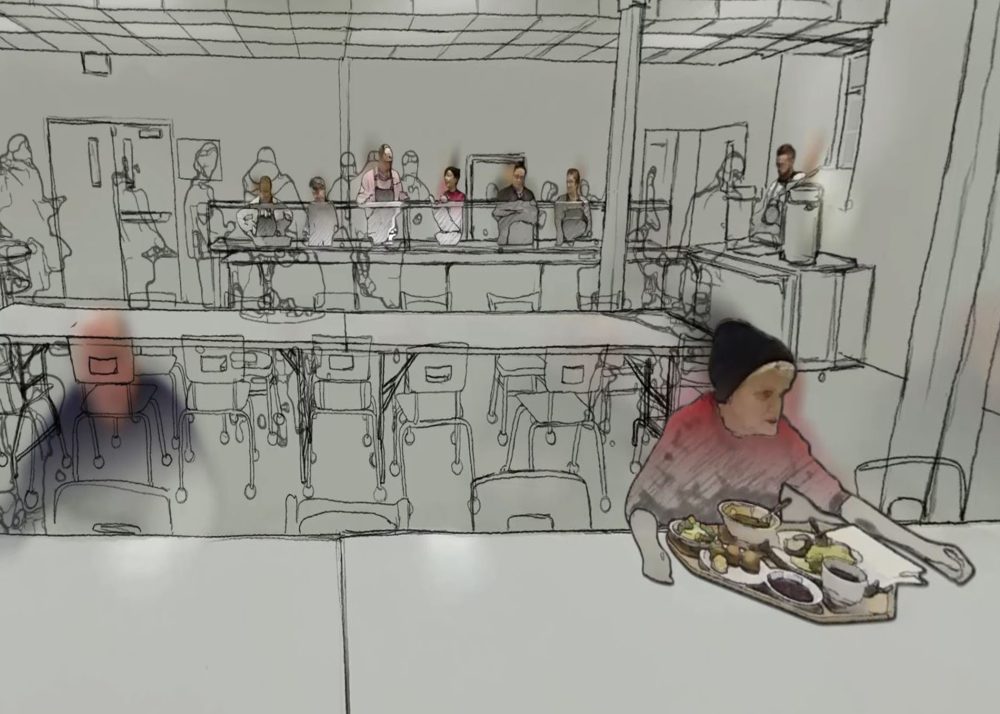Bermudes (dérive) pour yeux fermés
Bermudes (dérive) pour yeux fermés
Description
Nous sommes invité.es à entrer dans le décor endormi de Dérive de nuit et à se blottir dans la noirceur. Écoutons. Frédéric Auger a conçu soigneusement la version sonore du spectacle Bermudes (dérive) qui n’a finalement jamais pu voir le jour sur une scène. Maintenant, nous n’avons qu’à fermer les yeux alors que ce spectacle nous est présenté sous forme sonore.
Les ambiances et compositions originales de Frédéric nous ferons glisser d’un état à un autre, jusqu’aux rives de la Basse-Côte-Nord. Nous entendrons des voix. Celle de la femme qui sait des choses. Celles d’une vague de jeunes. Celles de Bob et de Mika. Nous serons témoin.tes de la rencontre de ces deux hommes que tout oppose en apparence, et qui se racontent à partir des séquences d’un film et des fragments d’un roman; tous deux intitulés Bermudes et signés par une femme fascinée par les naufrages.
We are invited to enter the dormant setting of Dérive de nuit and snuggle into the darkness. Let’s listen in. Frédéric Auger carefully crafted the sound version of Bermudes (dérive), a show that never saw the light of day on a stage. Now, all we have to do is close our eyes as this show is presented to us in its audio form.
Frédéric’s moods and original compositions will take us from one state to another, to the shores of the Lower North Shore. We’ll hear voices. The voice of a woman who knows things. Those of a wave of young people. The voices of Bob and Mika. We’ll witness the meeting of these two men, who seem to oppose each other in every way, and who tell their stories from the sequences of a film and fragments of a novel, both entitled Bermudes and written by a woman fascinated by shipwrecks.
Biographie
Fondé à Montréal en 2006, Système Kangourou est une compagnie de création et de production de spectacles et d’événements interdisciplinaires.
Avec sa démarche singulière, Système Kangourou marque depuis plus de 15 ans le paysage théâtral québécois. Sous la codirection artistique et générale d’Anne-Marie Guilmaine et de Claudine Robillard, la compagnie a créé et produit 13 projets originaux présentés dans des contextes in situ ou sur les scènes les plus variées et innovantes : le Festival TransAmériques (FTA), le Carrefour international de théâtre, La Chapelle – Scènes contemporaines, Espace Libre, le Musée d’art de Rouyn-Noranda (MA) et même le Festival Grado Cerro de Bogota.
En juin 2021, Système Kangourou entre comme compagnie résidente au Théâtre Aux Écuries pour un mandat de sept ans. En plus d’y créer leurs prochains spectacles, Guilmaine et Robillard y assument un mandat de codirectrices artistiques et s’impliquent dans la programmation, le mentorat d’artistes de la relève et l’organisation des activités du Centre de création.
Founded in Montreal in 2006, Système Kangourou is a company that creates and produces interdisciplinary shows and events.
Thanks to its singular approach, Système Kangourou has been making its mark on Quebec’s theatrical landscape for over 15 years. Under the artistic and general co-direction of Anne-Marie Guilmaine and Claudine Robillard, the company has created and produced 13 original projects presented in site-specific contexts or on the most diverse and innovative stages: the Festival TransAmériques (FTA), the Carrefour international de théâtre de Québec, La Chapelle – Scènes contemporaines, Espace Libre, the MA Musée d’art de Rouyn and even Bogota’s Festival Grado Cero.
In June 2021, Système Kangourou became a resident company at Théâtre Aux Écuries for a seven-year term. In addition to developing their next productions there, Anne-Marie and Claudine act as co-artistic directors and are now involved in programming, mentoring emerging artists and organizing activities at the Creation Center.
Crédits
Expérience d’écoute immersive de Bermudes (dérive), adaptation audio du spectacle éponyme coproduit par Système Kangourou et le Théâtre du Tandem, à partir du film Bermudes (nord) et du roman Bermudes de Claire Legendre
Musiques, prise de son, mixage, réalisation et spatialisation sonore: Frédéric Auger
Texte: Anne-Marie Guilmaine, Mika Pluviose, Bob Smith et Claire Legendre
Direction artistique: Claudine Robillard et Anne-Marie Guilmaine
Avec les voix de Mika Pluviose, Bob Smith, Jacinthe Tremblay, et celles de la vague de jeunes: Joëlle Beaugrand-Champagne, Raphaël Benchequroun, Rosalie Caron, Emrys Farley, Romane Perron, Romane St-Pierre, Malek Thériault et Adèle Tremblay
L’adaptation audio de Bermudes (dérive) est une production de Système Kangourou soutenue par le Conseil des arts du Canada.
TBA





































![OCTOCOSM[E]_Installation_Presse2023](https://moismulti.org/wp-content/uploads/2024/01/OCTOCOSME_Installation_Presse2023.png)
![OCTOCOSM[E]_VisuelGénératif3D_4](https://moismulti.org/wp-content/uploads/2024/01/OCTOCOSME_VisuelGeneratif3D_4-1000x391.png)
![OCTOCOSM[E]_VisuelGénératif3D_3](https://moismulti.org/wp-content/uploads/2024/01/OCTOCOSME_VisuelGeneratif3D_3-1000x391.png)
![OCTOCOSM[E]_VisuelGénératif3D_1](https://moismulti.org/wp-content/uploads/2024/01/OCTOCOSME_VisuelGeneratif3D_1-1000x391.png)
![OCTOCOSM[E]_RenderHDNov2023_1](https://moismulti.org/wp-content/uploads/2024/01/OCTOCOSME_RenderHDNov2023_1-1000x1000.jpg)
![OCTOCOSM[E]_GrosPlan_Instrument](https://moismulti.org/wp-content/uploads/2024/01/OCTOCOSME_GrosPlan_Instrument-1000x606.png)







